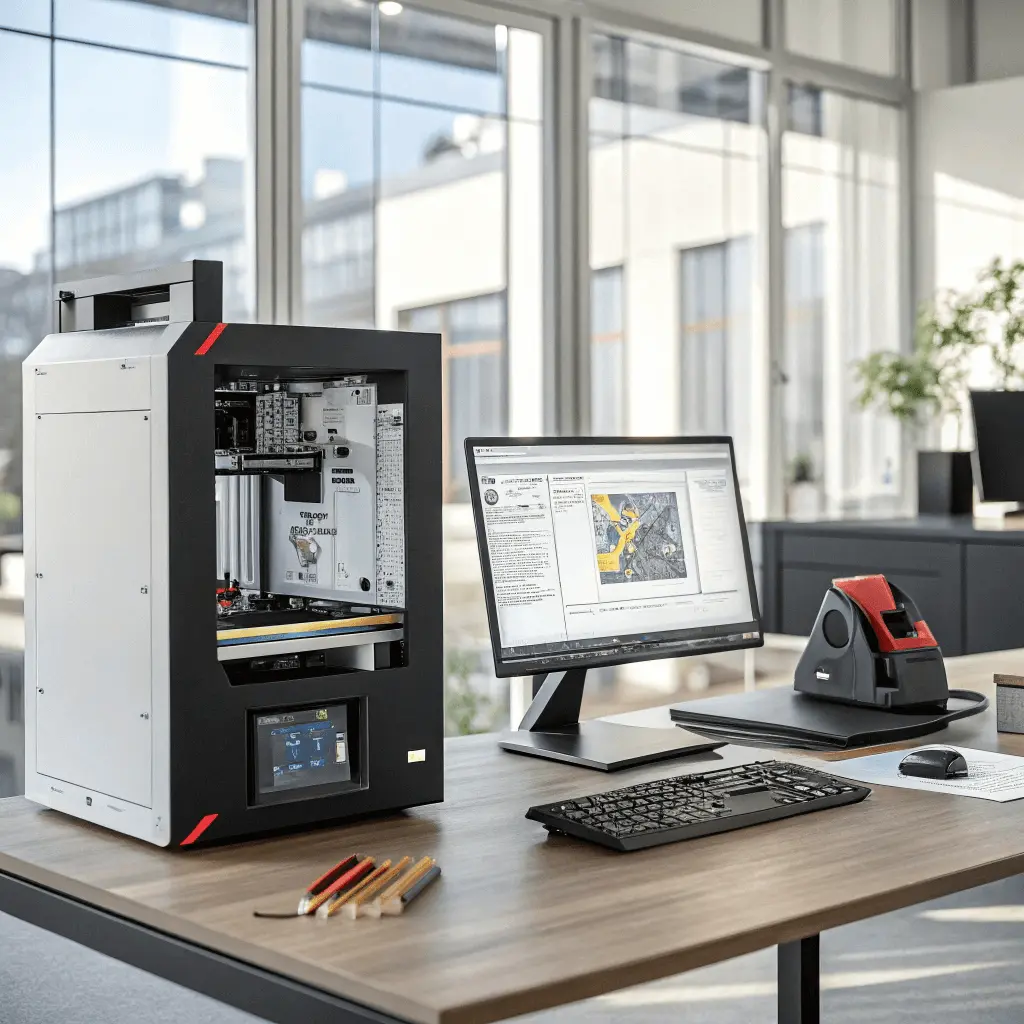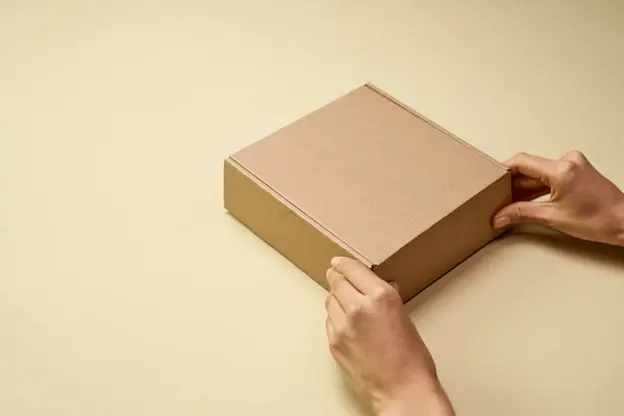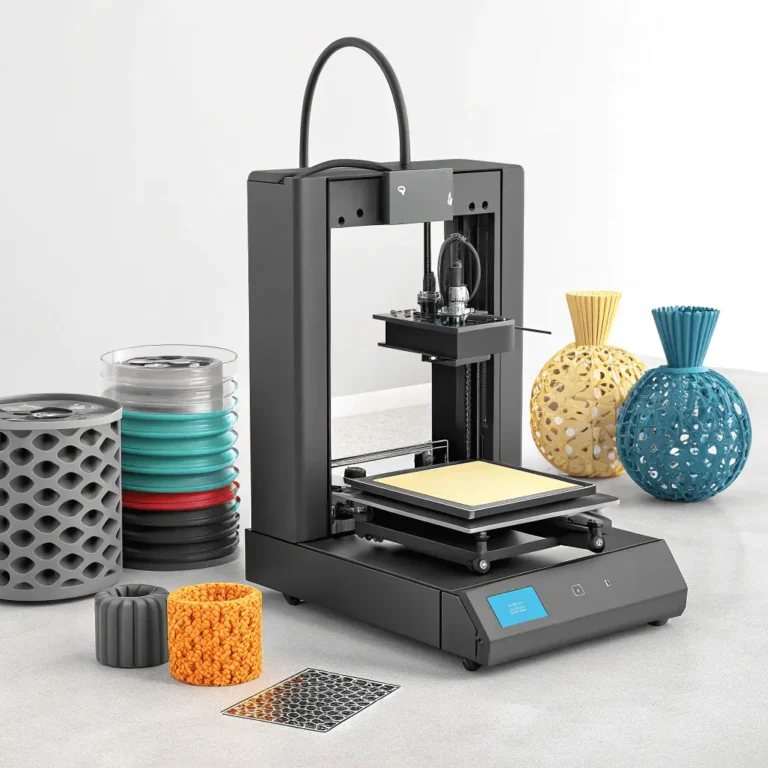
In today’s transient manufacturing landscape, speed, efficiency, and precision are of optimum requirement. While it’s easy to stay habituated with the traditional method, there’s a chance of falling behind.
Especially when the industry is already moving forward with injection molding and 3D modelling technologies, it’s time to reconsider your methods.
Manufacturing company owners and B2B stakeholders must understand the importance of 3D modeling in the injection molding process. While many manufacturers sideline these emerging technologies as technical concerns, pioneering organizations are considering 3D modelling as a critical business decision.
Through this blog post, we have explored how 3D modelling is revolutionizing tooling and injection molding. It’s the key to driving accuracy and shorter lead times in the modern manufacturing landscape.
The Foundation: What Is 3D Modeling in Manufacturing?
3D modelling is a process of preparing digitized models of real-world objects through the use of specialized software. It provides manufacturers with specialized tools and technologies to:
- Visualize complex product parts and components before going into the complete production process.
- Simulating part behaviors, tolerances, and performance under different conditions allows for performance insight.
- Additionally, 3d modelling helps with communicating design intent clearly to all the stakeholders before a product or part goes into a full-fledged production process.
- It also provides an advantage in communicating design intent to the stakeholders clearly from the shop floor to the management level.
3D modeling outputs come in different formats such as STL, FBX, and OBJ, serving as the master blueprint for downstream processes. These files help with prototyping, tooling, and actual production of different types of plastic parts.
The Role of 3D Modeling in Injection Molding
Injection molding is the leading method for producing plastic on a massive scale. The accuracy, functionality, and manufacturability of those parts are directly connected to the design of the mold. This is the phase where 3D modelling provides manufacturers with a critical advantage.
1. Accurate Mold Design from Digital to Physical
CAD Integration: CAD software allows the creation of 3D models of different parts, geometrical shapes, and allows the creation of gates, cooling channels, and more. This integration makes avoiding manual errors easy.
Simulation Ready: Construction optimization of a product through 3D modelling helps avoid rework. Mold designs created using 3D models help create simulations of the manufacturing process and track material behavior through simulation. It’s better to optimize construction before moving ahead with expensive tooling.
Iterative Refinement: early testing through 3D modeling also helps find design flaws, potential warping, and identify stress points. This way, injection modelling becomes more reliable and faster to achieve.
2. Shorter Lead Times and Rapid Prototyping
Manufacturing any specific product moves through a multi-phased process. A key step in the process is prototyping of the design. The use of 3D modelling facilitates the fast and easy creation of prototyping before an idea moves through the production phase.
Cost-Efficient Testing: The plastic injection molding services involve prototyping both molds and the parts of the product. It allows testing before committing to high-cost product creation using expensive materials like steel and other metals.
Low-Volume Production: Low-volume production of any finished product can use 3D modelling for creating prototypes. These prototypes help with the testing of the product before stakeholders greenlight large-scale manufacturing.
3. Enhanced Precision in Tooling Services
Digital models are the best virtual replicas to check the poor tolerance level. Especially parts that require high consistency demand testing of tolerance control. That’s where 3D modeling comes as an excellent solution for manufacturers.
Complex molds that are too costly to buy can be manufactured in separate components. In fact, manufacturers nowadays are relying on 3D models to create mold inserts that consume more budget through traditional machining.
Once the model gets perfected, it becomes easy to build identical molds and parts to fast-track the production process.
4. Improved DFM (Design for Manufacturability)
3D modeling is excellent for rapid DMF checks. It’s the best solution for ensuring designs get optimized for the realities of injection molding processes. This way, manufacturers reduce lots of rework and scrapped parts.
Advanced computer-aided engineering (CAE) tools utilize 3D modelling to simulate mold filling, ejection, cooling, and proactive elimination of common molding inefficiencies. This way, manufacturers can get rid of defects such as sink marks, air traps, and weld lines in their finished products.
All stakeholders—from mold makers to quality assurance—operate from the same digital source of truth, eliminating miscommunication.
3D Modeling Enhancements Throughout the Injection Molding Workflow
3D modeling enhances manufacturing throughout the multiple phases. Here are common areas where 3D models enhance manufacturing:
Prototyping
Fast design validation: Rapid iteration between design and prototypes helps catch design flaws before they escalate to a level where they become uncontrollable.
Material Simulation: Virtual testing for stress, shrinkage, and cooling time becomes easy with 3D prototyping of any product.
Tooling Services
Digital Twin: The 3D models as digital twin—an essential technological solution to modern manufacturing environments. It helps throughout the mold fabrication process by working as a reference for quality inspection.
Custom Cooling Channels: It’s almost impossible to achieve a complex and conformal cooling process through traditional means. It becomes easier to integrate this cooling system into the mold with the use of 3D modeling and additive manufacturing.
Manufacturing & Quality Assurance
3D modelling also plays a critical role in manufacturing quality assurance. Every plastic part of a 3D model ties them back to the digital origin. Therefore, it supports process validation and regulatory compliance. It helps find and analyze root causes during the occurrence of any critical event.
Furthermore, 3D modeling takes a critical part in quality assurance of the manufacturing process. Automated measurement machines (CMMs) utilize a digital model for accurate inspection of the manufacturing process.
Key Benefits of 3D Modeling in Injection Molding
3D modelling holds huge significance in the world of manufacturing and injection molding.. The following benefits are must-consider ones:
- Reduced Time to Market: Faster iterations and lower risk of late-stage redesigns.
- Lower Costs: 3D modelling helps design accurate products with utmost precision, reducing the need for rework and additional costs incurred.
- Flexibility: Design changes are easy and inexpensive to implement digitally. The flexibility of testing designs through 3D prototypes helps optimize cost in manufacturing.
- Greater Innovation: Complex geometries, lightweight structures, and novel material use become feasible and cost-effective.
When Innovation Meets Efficiency!
Adoption of 3D modeling in injection molding plays a critical role. While cost optimization and efficiency are concerns among most organizations, it’s also important to keep up with larger industry trends. 3D modeling for injection molding is the answer to industry friendliness while optimizing manufacturing for compliance and innovation.
3D modeling is the solution to delivering high-quality plastic parts at a lower cost. It’s the right integration for the injection molding technology to optimize production throughout the product lifecycle. Whether launching a new product or heading toward an innovative approach to manufacturing complexity, 3D modeling empowers you with innovative solutions.






